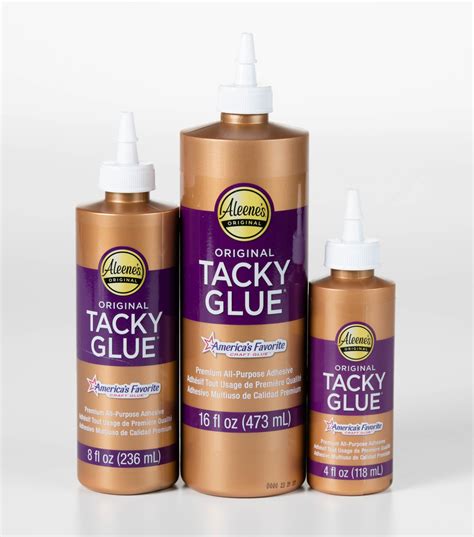Tacky Glue: From Mess to Masterpiece Quickly
Tacky glue. The name itself conjures images of childhood crafts, slightly sticky fingers, and the occasional accidental glue-gun-like mishap. But this humble adhesive is far more versatile than its reputation suggests. With a little know-how, tacky glue can transform from a potential mess into a crucial tool for creating stunning masterpieces, quickly and efficiently. This guide will explore the best techniques for using tacky glue, addressing common questions and helping you unlock its full potential.
What is Tacky Glue, Exactly?
Tacky glue, also known as school glue or white glue, is a water-based adhesive commonly used for paper, cardboard, fabric, and other porous materials. Its versatility stems from its relatively quick drying time and strong bond once set. Unlike super glue or other instant adhesives, tacky glue allows for a bit of repositioning before it fully cures, making it ideal for precise crafting. This characteristic makes it a favorite among crafters of all skill levels.
How to Use Tacky Glue Effectively: Tips and Tricks
The key to mastering tacky glue lies in understanding its properties and employing the right techniques. Here's a breakdown of effective usage:
-
Application: Use a toothpick, craft stick, or even a thin paintbrush for precise application. This prevents globs of glue, resulting in a cleaner finish. For larger areas, consider using a sponge brush for even coverage.
-
Less is More: Apply a thin, even layer of glue to one surface only. Too much glue can lead to wrinkles, warping, and an unsightly mess.
-
Clamping: For projects requiring a strong, lasting bond, use clamps, binder clips, or weights to hold the pieces together while the glue dries. This ensures a tight, even bond and prevents warping.
-
Drying Time: While the glue may seem dry to the touch relatively quickly, allow ample drying time for a truly secure bond. This time varies depending on the project's size, the materials used, and the ambient temperature.
-
Cleanup: Tacky glue is water-soluble when wet, making cleanup a breeze. Simply wipe away any excess glue with a damp cloth or sponge. However, once dry, it becomes more difficult to remove.
Tacky Glue vs. Other Adhesives: When to Use Which?
Choosing the right adhesive for the job is crucial. While tacky glue excels in many crafting situations, it's not always the best choice. Here’s a quick comparison:
| Adhesive Type | Best for | Limitations |
|---|---|---|
| Tacky Glue | Paper, cardboard, fabric, wood (porous) | Not ideal for non-porous surfaces, strong bonds |
| Hot Glue | Quick fixes, strong bonds, non-porous | Can burn, not repositionable |
| Super Glue | Instant bonds, non-porous surfaces | Very strong, not easily repositionable, messy |
| Mod Podge | Sealing, decoupage, adding texture | Not ideal for structural bonding |
What are the Best Surfaces for Tacky Glue?
Tacky glue bonds best with porous materials, those with small openings that allow the glue to seep in and create a strong bond. These include:
- Paper: Ideal for paper crafts, scrapbooking, and card making.
- Cardboard: Great for creating boxes, models, and other three-dimensional structures.
- Fabric: Suitable for appliqué, quilting, and other textile projects.
- Wood (porous): Works well on softer woods, but less effective on hardwoods.
Is Tacky Glue Safe for Kids?
Tacky glue is generally considered safe for children to use under adult supervision. It's non-toxic and water-soluble, but it's essential to teach children safe handling practices, including proper application, cleanup, and avoiding eye or mouth contact.
Can I Mix Tacky Glue with Other Materials?
Yes! Tacky glue can be mixed with other materials to create unique textures and effects. Common additions include:
- Baking Soda: Creates a thick, putty-like consistency, ideal for modeling and sculpting.
- Water: Thins the glue, making it easier to spread and better suited for delicate projects.
- Glitter: Adds sparkle and shine to various craft projects.
Tacky Glue Projects: Unleashing Your Creativity
Tacky glue's versatility opens up a world of creative possibilities. From simple paper crafts to intricate decoupage projects, the possibilities are endless. Here are a few ideas to get you started:
- Paper flowers: Create delicate and realistic paper flowers using various shapes and techniques.
- Cardboard models: Construct intricate models of buildings, vehicles, or other objects.
- Fabric appliqué: Add decorative fabric elements to clothing, bags, or home décor items.
- Scrapbooking: Secure photos, embellishments, and other elements to your scrapbook pages.
By understanding the properties of tacky glue and employing the right techniques, you can transform this humble adhesive into a powerful tool for creating stunning, long-lasting masterpieces—quickly and efficiently. So, grab your glue, unleash your creativity, and let the crafting begin!

